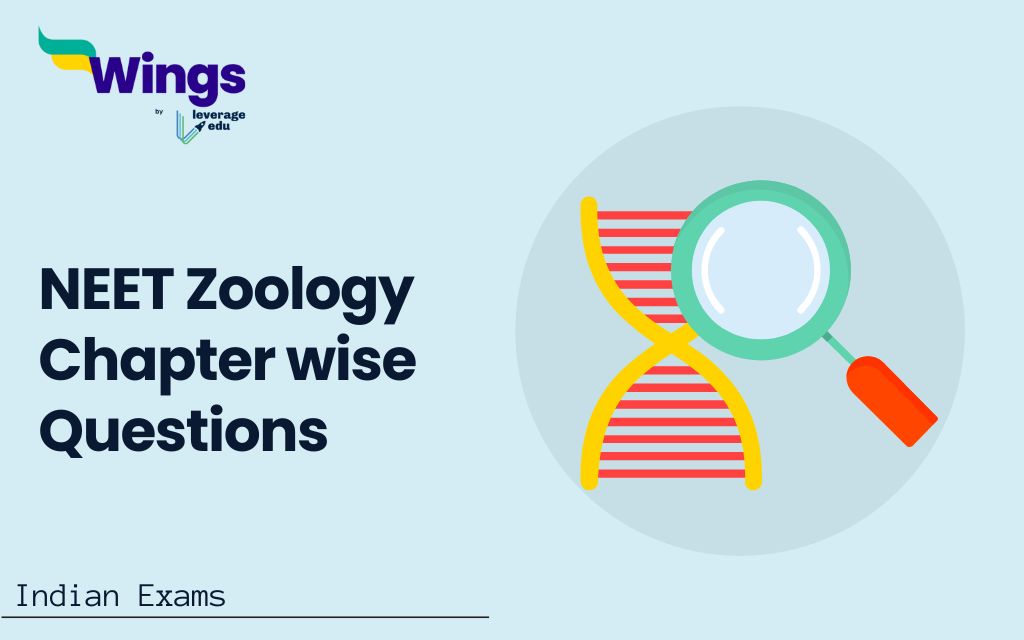Hey, Students! Please welcome Professor Owl 🦉. He will provide us NEET Zoology Chapter-Wise Questions and answers. Since owls are very wise, Hootfully, He’ll be of help to you! If you scroll further down this blog, you’ll see all the questions and answers you will need!
What if you have a set of NEET Zoology Chapter-Wise Questions during your preparation? What if you know about the important topics of Zoology related to NEET 2024? Well, there is no doubt to say that you’ll have an advantage in comparison to other students. Your chances of getting a good score in the National Eligibility cum Entrance Test will significantly increase. To help you better for NEET exam preparation, we have mentioned a set of questions and answers.
📚 NEET Zoology Chapters
Before we proceed with questions and answers of Zoology subject, you should have a fair idea about the chapters of NEET Zoology. Below, we have mentioned the list of chapters. Check them out now.
| Chapters of NEET Zoology | Class |
| Animal Kingdom | 11th Class |
| Structural Organisation in Animals | 11th Class |
| Biomolecules | 11th Class |
| Digestion and Absorption | 11th Class |
| Breathing and Exchange of Gases | 11th Class |
| Body Fluids and Circulation | 11th Class |
| Excretory Products and their Elimination | 11th Class |
| Locomotion and Movement | 11th Class |
| Neural Control and Coordination | 11th Class |
| Chemical Coordination and Integration | 11th Class |
| Human Reproduction | 12th Class |
| Reproductive Health | 12th Class |
| Evolution | 12th Class |
| Human Health and Disease | 12th Class |
| Biotechnology Principles and Processes | 12th Class |
| Biotechnology and its Applications | 12th Class |
Must Read: Career Options If NEET is not Cleared
📚 NEET Zoology Chapter-Wise Questions
Now, below we have mentioned chapter-wise questions that will help you to cover topics of this subject. Check out now.
(A) Triploblastic Development
(B) Bilateral symmetry
(C) Cephalisation
(D) True coelom
Answer: D
(A) Toad
(B) Rabbit
(C) Lizard
(D) Frog
Answer: B
(A) Pseudocoelom
(B) Ventral nerve cord
(C) Segmentation
(D) Closed circulatory system
Answer: A
(A) Toothless jaw
(B) Functional post and tail
(C) Oviparity
(D) Homoiothermy
Answer: D
Read More: What is NEET Exam?
(A) Mast Cells
(B) Eosinophils
(C) Mast Cells and Basophils
(D) Eosinophils and Mast Cells
Answer: C
(A) Phallic gland
(B) Colleterial gland
(C) Mushroom gland
(D) Conglobate gland
Answer: B
(A) Calcified
(B) Fibrous
(C) Elastic
(D) Hyaline
Answer: C
(A) Uricose gland
(B) Malpighian tubules
(C) Fat body
(D) Phallic gland
Answer: D
Also Read: Best Books for NEET Preparation
(A) 20%
(B) 30%
(C) 40%
(D) 50%
Answer: B
(A) Carbon
(B) Nitrogen
(C) Iron
(D) Calcium
Answer: A
(A) Acid proteins
(B) Histones
(C) Basic proteins
(D) Actin
Answer: C
(A) Protein
(B) Cellulose
(C) Lipids
(D) Steroids
Answer: B
(A) Right lung
(B) Left lung
(C) Both lungs
(D) None of the above
Answer: C
(A) Nasal septum
(B) Larynx
(C) Glottis
(D) Trachea
Answer: B
(A) 1200 mL
(B) 2300 mL
(C) 1000 mL
(D) 500 mL
Answer: B
(A) 12 mL
(B) 7 mL
(C) 10 mL
(D) 5 mL
Answer: B
Must Read: How to Crack NEET with Board Exam?
(A) A tripartite body organization
(B) Stomochord
(C) Rudimentary Notochord
(D) Proboscis Gland
Answer: C
(A) Legs
(B) Nutritional deficiencies
(C) Lungs
(D) Pulmonary veins
Answer: B
(A) Only the larvae have notochord
(B) Presence of Endostyle
(C) Secreation of Cellulose sac
(D) Larvae are voracious eaters
Answer: D
(A) Exclusively Marine
(B) Radial symmetry in adults
(C) Protostome embryonic Development
(D) Water Vascular System
Answer: C
Related Blogs
| NEET Exam | NEET Preparation Tips |
| Medical Courses Without NEET | How to Study Physics for NEET |
| NCERT Books for NEET | Botany Syllabus for NEET Exam |
This was all about the NEET Zoology Chapter-Wise Questions. For more such informative blogs, check out our NEET Exams Section, or you can learn more about us by visiting our Indian exams page.
 One app for all your study abroad needs
One app for all your study abroad needs














